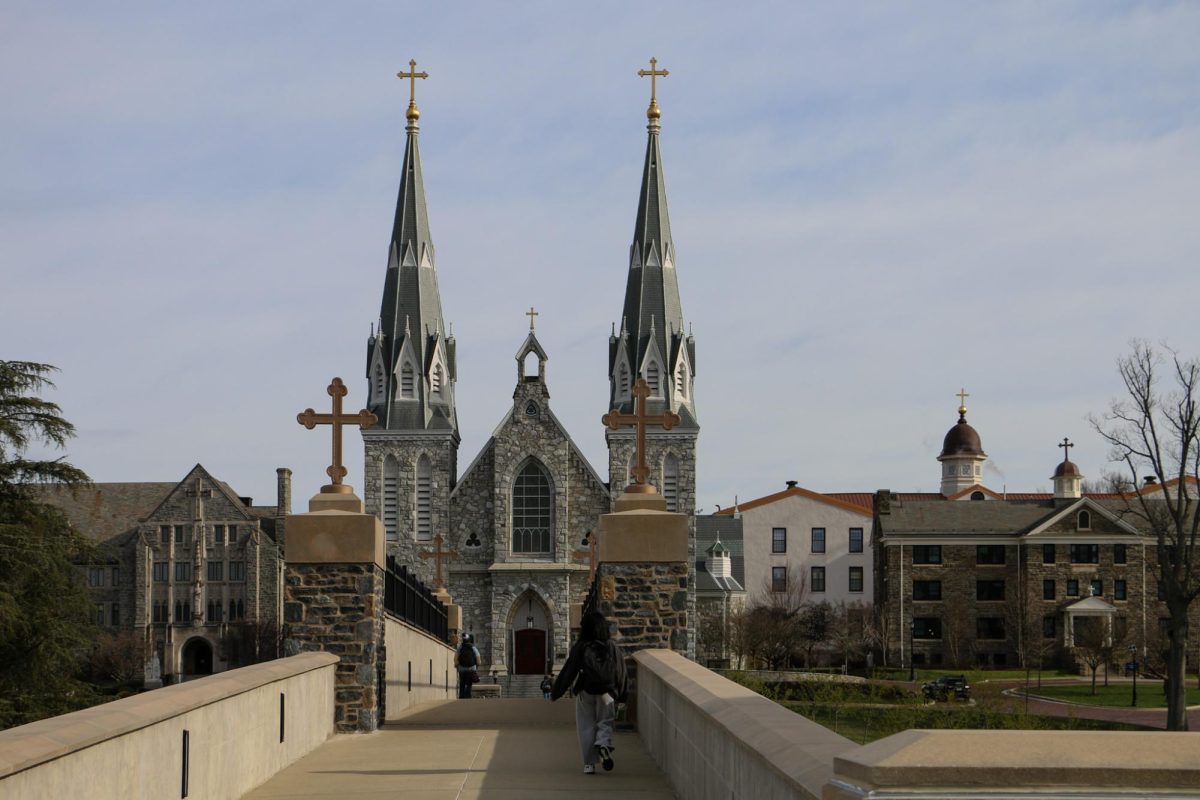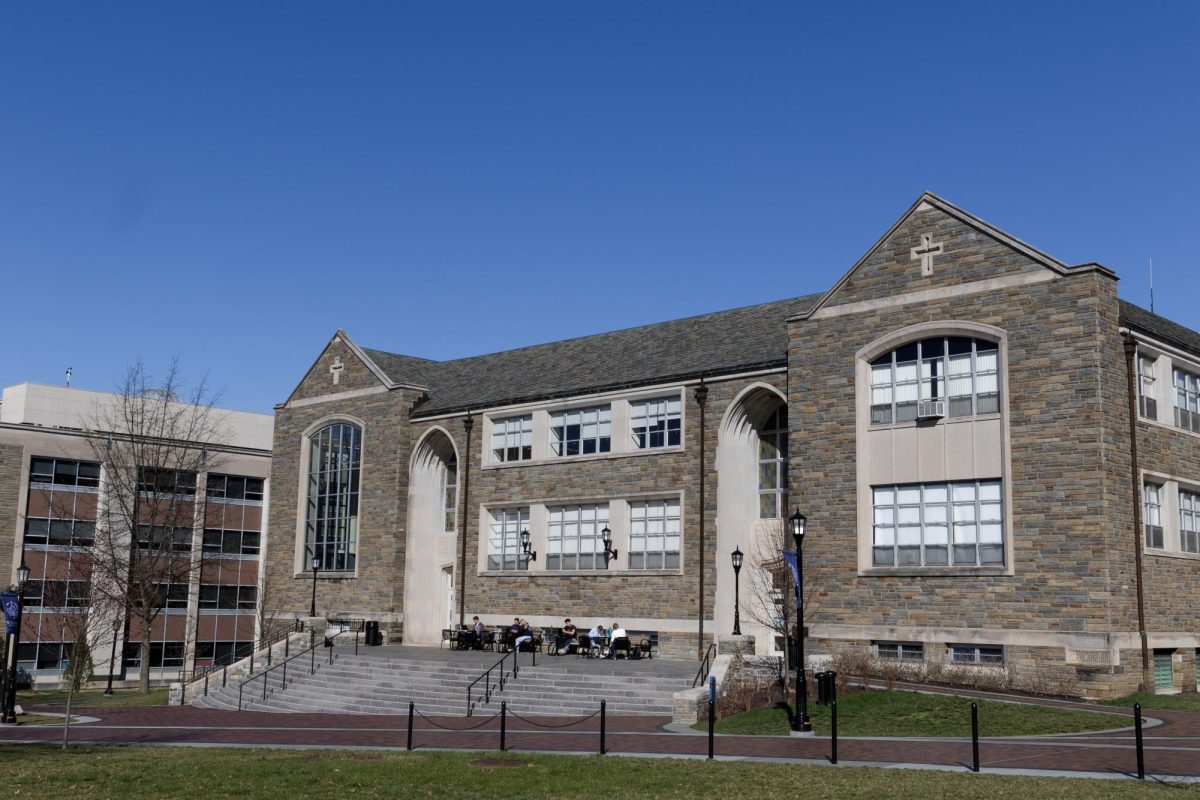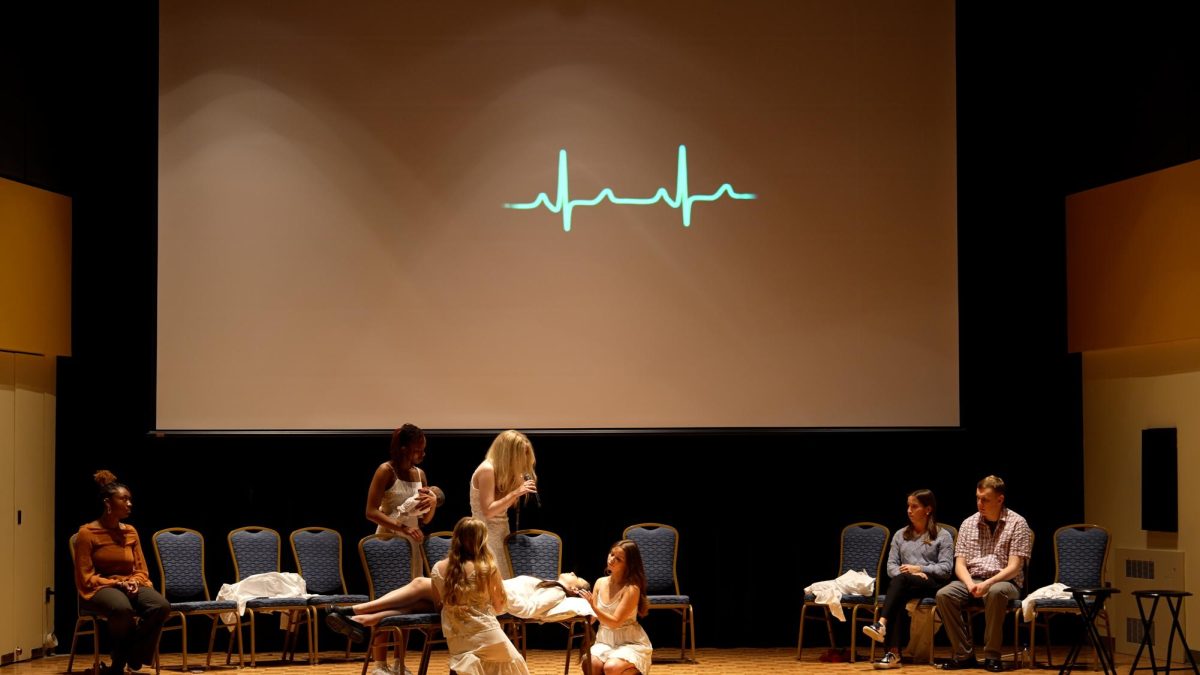A unique aspect of Villanova’s Campus Ministry is the student involvement. Sunday Masses are student-led and require the cooperation of Villanovans gathered in faith from the lectors and Eucharistic ministers to the pastoral musicians.
This past Sunday was unlike any other Sunday in the Christian liturgical year. It was Palm Sunday, a feast that commemorates Jesus Christ’s entrance into Jerusalem as described in the four canonical Gospels. For Christians, Palm Sunday is the beginning of Holy Week and the Easter Triduum that recalls the passion, crucifixion, death, burial and resurrection of Jesus Christ.
The Palm Sunday Masses attempted to tell the story of Holy Week by evoking every possible emotion: joy, pain, grief and, most importantly, hope. St. Augustine is known to have said, “to sing is to pray twice,” meaning that one may use their voice to create a space to become closer to and explore God. On Palm Sunday, music became the medium that aided the congregation in experiencing the fullness of Holy Week.
“Palm Sunday is one of the best days of the Spring Semester,” graduate student and bass player Colin Weber said. “Each Mass features a packed church with excitement building towards Easter.”
One of the prelude hymns, “Legend (The Crown of Roses),” composed by Pyotr Ilyich Tchaikovsky, is based on Richard Henry Stoddard’s poem “Roses and Thorns,” which tells an ominous story of a young Jesus being teased and chastised by other children who make a crown of the rose thorns he tends to in his garden. This piece, filled with intense visual imagery and thought-provoking crescendos and decrescendos, tells a story of the human Jesus, a Jesus that has experienced shame and embarrassment. This piece normalizes the human experience and reminds parishioners that Jesus was human and felt the full range of emotions.
At the 7 p.m. Mass, Rev. Naomi Washington-Leapheart, an adjunct faculty member in the Theology and Religious Studies department at Villanova, sang “Were You There” during the Communion rite. The piece is an African-American spiritual composed by African-American slaves in the 19th century. Spirituals are rooted in biblical stories, but also attempt to capture the extreme hardships endured by African-Americans during the period of their enslavement in the United States. While “Were You There” literally recounts the crucifixion, death and burial of Jesus, it also invites the listener to ponder what the lyrics could have meant to an enslaved population centuries ago. Sophomore trumpet player Vincent Vandiver was certainly impacted by the performance.
“’Were You There’…moved me and brought me closer to God and our beautiful church community,” Vandiver said. “Though the Passion is quite powerful on its own, the music from the Pastorals and the insightful homilies from the Friars truly allowed me to enter more deeply into the tragic yet hopeful nature of Holy Week.”
As the Mass progressed, the music became increasingly chilling and pensive. Mozart’s Lacrimosa from his Requiem Mass was certainly memorable. The Latin text is a merciful plea to God on the Day of Judgement for eternal rest in the Kingdom of Heaven. Lacrimosa is Latin for “weeping,” or “tearful.” A piece from a Requiem Mass is apt for Holy Week as the Church anticipates Good Friday, a day where it recounts the pain, suffering and death of Jesus on the cross.
“I love hearing the echo of the room after singing pieces,” senior singer Amelia Morning said. “[These] pieces have such weight to them, and we are able to make the music that touches the hearts of others…Music is able to add a layer to the Mass to help connect to people so they can feel and understand on a deeper level.”
With the Lacrimosa, specifically, the text was peripheral. Comprehension of Latin was irrelevant and unnecessary as English translation was provided in the worship aids. The way in which the piece was sung, the demeanor of the choir, and the semi-orchestral accompaniment helped the congregation feel the impending doom of Judgement Day and the darkness and fear associated with death, making them wonder how Jesus felt in the last hours of his life.
As the Mass came to an end, the final pieces, including “All Glory, Laud, and Honor,” instill in the congregation a sense of hope and a reminder that both a literal resurrection of Christ is coming and that, in a greater sense, good times follow the bad. In every stage of Holy Week, from the celebration of Palm Sunday by singing “Hosanna to the Son of David,” to the sorrowful rendition of “Perdona a Tu Pueblo Señor,” to commemorate the heaviness of the Crucifixion, song is how this story was told and song is how this story continues to manifest in the hearts of many.






